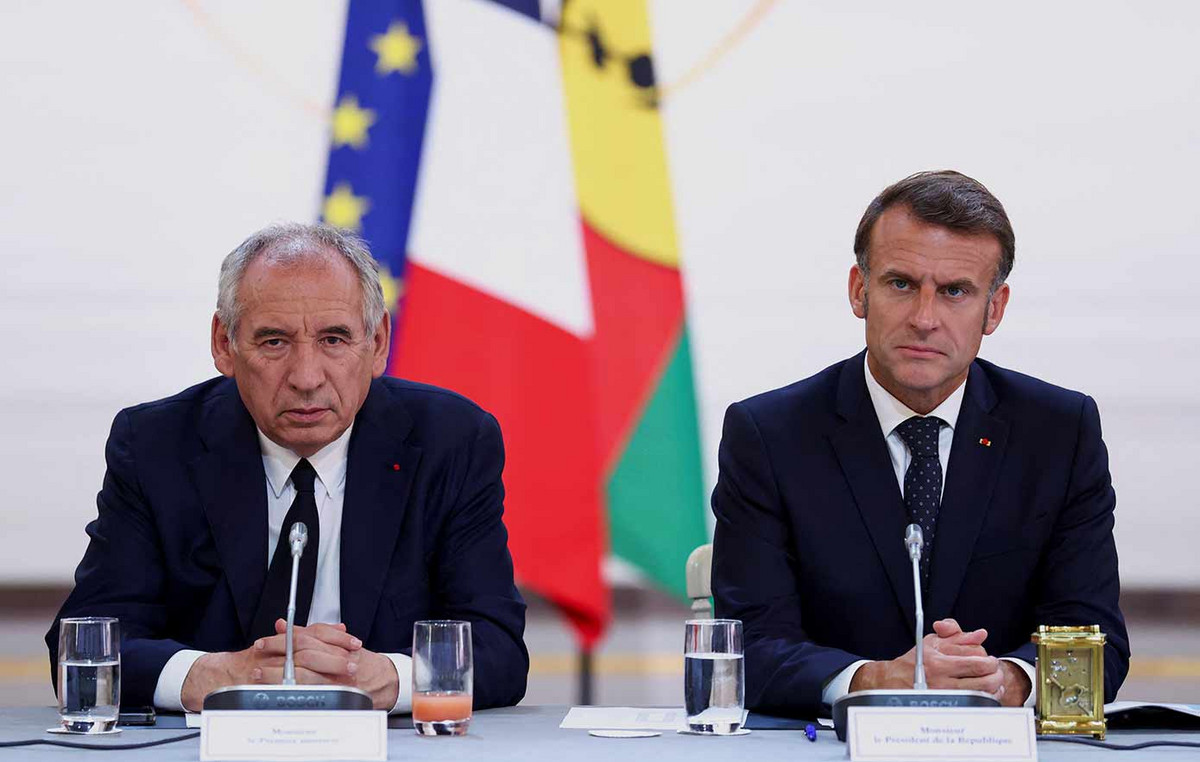- Germany’s Federal Statistical Office will publish German inflation data on Thursday.
- The headline CPI is expected to rise 4.6% year-on-year in September, a sharp decline from the previous increase of 6.1%.
- German inflation data will offer new clues on Eurozone data, influencing ECB policy.
The president of the European Central Bank (ECB), Christine Lagarde, declared on Monday before the Economic and Monetary Affairs committee of the European Parliament that interest rates will remain high “as long as necessary.” Does this mean the end of the ECB’s rate hike cycle or is the door still ajar for one more hike this year?
The ECB meets next month to review its monetary policy and, therefore, the upcoming inflation data from the Harmonized Index of Consumer Prices (HICP) of Germany and the Eurozone are of utmost importance due to their impact on the policy decision. of the central bank.
The Euro could prolong its downward trend if inflation data from the Eurozone economies, especially Germany, reveal the underlying disinflationary trend.
What can we expect from the next report on inflation in Germany?
Germany’s Federal Statistical Office (Destatis) will publish official data on Thursday. The annual German Consumer Price Index (CPI) is expected to rise 4.6% in September, down from 6.1% in August. Monthly CPI inflation will increase at a constant rate of 0.3% in the reported period.
In Germany, annual inflation measured by the IPCA would drop sharply to 4.5% in September, compared to 6.4% in August. Core HICP is likely to rise 0.3% in September, up from a 0.4% acceleration in August.
A further cooling of inflation in Europe’s largest economy could lead to lower inflation in the bloc’s global data, due to be published on Friday.
The euro zone Harmonized Index of Consumer Prices (HICP) is expected to increase 4.5% year-on-year in September, a slowdown from 5.2% in August. The core inflation of the IPCA, which is closely monitored by the European Central Bank, would also be at 4.8%, compared to 5.3% the previous month.
Regarding inflation developments, Lagarde stated that price growth is likely to remain “too high for too long” despite the recent decline: “Strong spending on holidays and travel and rising wages were slowing the decline in price levels, even while the economy remains sluggish,” he added. Therefore, it remains to be seen whether inflation data from Germany and the Eurozone underline hidden disinflationary signals or point to a renewed upward trend in inflation in the face of the recent rebound in oil prices.
Regional inflation data could give a clue about the trend of overall German inflation in September. North Rhine-Westphalia (NRW) is the first German state to report September inflation and, being the most populous, its reading can often be a sign of the trend of the figure for Germany as a whole.
Still, the North Rhine-Westphalia figures do not always work well as a forward-looking indicator. In August, inflation in this German state rose to 5.9% year-on-year, up from 5.8% in July, signaling the possibility of an unexpected rise in overall German inflation. However, national figures ultimately showed softer inflation figures, as some other major states saw easing of price pressures. For example, consumer prices in the German state of Bavaria rose 5.9% year-on-year in August, the lowest inflation rate since February 2022 and a softening from the previous month’s 6.1% increase. The annual inflation rate in the German state of Saxony rose to 6.8% in August 2023, from 6.7% in July.
In September, consumer prices in the German state of North Rhine-Westphalia rose 0.2% month-on-month and 4.2% year-on-year, the state’s statistics office reported Thursday.
Regarding August inflation data, Deutsche Bank explains: “September forecast: Headline and core inflation figures could fall substantially. Due to the disappearance of two large base effects, derived from last summer’s fuel discount and the 9 euro ticket, we expect Germany’s headline and core CPI inflation rates to fall substantially again in September.”
“In this context, we estimate that the two aforementioned effects could have boosted the year-on-year figures between June and August by up to three quarters of a percentage point,” Deutsche Bank analysts noted.
As usual, Spain has already published its national inflation figures for August, providing clues about the direction of the Eurozone HICP data set.
Spain’s Consumer Price Index (CPI) rose 3.5% year-on-year in September, preliminary data from the National Statistics Institute (INE) showed on Thursday. Twelve-month inflation was higher than the 2.6% rate in August and was in line with the expected 3.5%.
When will HICP inflation be reported and how could it affect EUR/USD?
Germany’s preliminary HICP will be published at 12:00 GMT. Ahead of Eurozone inflation data, the Euro (EUR) is struggling at six-month lows near 1.0550 against the US Dollar, as Fed and ECB monetary policy and macroeconomic divergence come into play again. game.
The US Federal Reserve (Fed) is expected to raise interest rates once again this year, while markets speculate that the ECB’s September 25 basis point (bp) rate hike will be probably the last one. Furthermore, the eurozone is on the verge of recession, while the US economy has shown encouraging signs of resilience, based on recent strong economic data.
Higher-than-expected headline and core inflation data could reinforce expectations of a new ECB rate hike at the end of the year. In such a case, EUR/USD could start a recovery towards the 1.0700 level. However, if the bloc’s inflation shows a faster than expected decline, the currency pair is likely to extend the decline towards 1.0400.
Dhwani Mehta, Chief Analyst of FXStreet’s Asian session, offers a brief technical outlook for the pair and explains: “The EUR/USD pair is about to confirm a death cross, represented by the simple moving average (SMA) of 50-day crossing below the 200-day SMA. The 50-day SMA is below the 200-day SMA. Meanwhile, the 14-day Relative Strength Index (RSI) is within of oversold territory. Therefore, the EUR/USD daily technical setup suggests that a bounce could occur before the next downtrend resumes.”
Dhwani also points out important technical levels for trading the EUR/USD pair: “The previous day’s high at 1.0575 is the first hurdle on the road to recovery, above which Euro buyers will challenge the 1.0600 barrier. At low, the psychological barrier of 1.0450 could provide some support to the pair, below which a test of the round level of 1.0400 cannot be ruled out.”
Euro quote this week
The following table shows the percentage change of the Euro (EUR) against the main currencies this week.
| USD | EUR | GBP | CAD | AUD | JPY | NZD | CHF | |
| USD | 1.18% | 0.56% | 0.20% | 1.06% | 0.62% | 0.23% | 1.33% | |
| EUR | -1.20% | -0.63% | -0.97% | -0.11% | -0.59% | -0.97% | 0.14% | |
| GBP | -0.56% | 0.64% | -0.36% | 0.52% | 0.05% | -0.34% | 0.77% | |
| CAD | -0.22% | 0.98% | 0.36% | 0.88% | 0.40% | 0.02% | 1.11% | |
| AUD | -1.07% | 0.10% | -0.52% | -0.86% | -0.47% | -0.86% | 0.25% | |
| JPY | -0.62% | 0.59% | -0.04% | -0.42% | 0.46% | -0.41% | 0.72% | |
| NZD | -0.24% | 0.96% | 0.34% | 0.00% | 0.85% | 0.38% | 1.10% | |
| CHF | -1.35% | -0.14% | -0.77% | -1.13% | -0.23% | -0.71% | -1.11% |
The heat map shows the percentage changes of the major currencies against each other. The base currency is chosen in the left column, while the quote currency is chosen in the top row. For example, if you choose the euro in the left column and scroll down the horizontal line to the Japanese yen, the percentage change that appears in the box will represent EUR (base)/JPY (quote).
Frequently asked questions about the Euro
What is the Euro?
The Euro is the currency of the 20 countries of the European Union that belong to the euro zone. It is the second most traded currency in the world, behind the US dollar. In 2022, it accounted for 31% of all foreign exchange transactions, with an average daily volume of more than $2.2 trillion per day.
EUR/USD is the most traded currency pair in the world, accounting for an estimated 30% of all transactions, followed by EUR/JPY (4%), EUR/GBP (3%) and EUR/AUD (2% ).
What is the ECB and how does it influence the Euro?
The European Central Bank (ECB), headquartered in Frankfurt, Germany, is the reserve bank of the euro zone. The ECB sets interest rates and manages monetary policy.
The ECB’s main mandate is to maintain price stability, which means controlling inflation or stimulating growth. Its main instrument is to raise or lower interest rates. Relatively high interest rates – or the expectation of higher rates – tend to benefit the Euro and vice versa.
The Governing Council of the ECB takes monetary policy decisions at meetings held eight times a year. Decisions are made by the heads of the eurozone’s national banks and six permanent members, including ECB President Christine Lagarde.
How do inflation data influence the value of the Euro?
Eurozone inflation data, measured by the Harmonized Index of Consumer Prices (HICP), are important econometric data for the euro. If inflation rises more than expected, especially if it exceeds the 2% target set by the ECB, it is forced to raise interest rates to bring it back under control.
Relatively high interest rates compared to their peers tend to benefit the Euro, as it makes the region more attractive as a place for global investors to park their money.
How do economic data influence the value of the Euro?
Data releases measure the health of the economy and can influence the Euro. Indicators such as GDP, manufacturing and services PMIs, employment and consumer sentiment surveys can influence the direction of the single currency.
A strong economy is good for the Euro. Not only does it attract more foreign investment, but it may encourage the ECB to raise interest rates, which will directly strengthen the Euro. Conversely, if economic data is weak, the Euro is likely to fall.
The economic data for the four largest economies in the eurozone (Germany, France, Italy and Spain) are especially significant, as they represent 75% of the eurozone economy.
How does the trade balance affect the Euro?
Another important release for the euro is the trade balance. This indicator measures the difference between what a country earns from its exports and what it spends on imports during a given period.
If a country produces highly sought-after export products, its currency will appreciate due to the additional demand created by foreign buyers wishing to purchase these goods. Therefore, a positive net trade balance strengthens a currency and vice versa for a negative balance.
Source: Fx Street
I am Joshua Winder, a senior-level journalist and editor at World Stock Market. I specialize in covering news related to the stock market and economic trends. With more than 8 years of experience in this field, I have become an expert in financial reporting.







